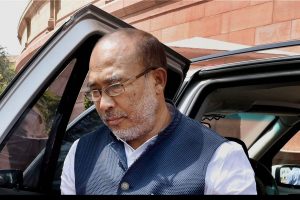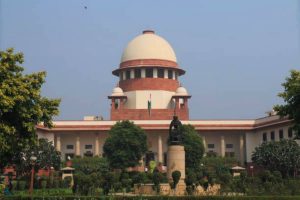The ongoing religious persecution of Bengali Hindus in Bangladesh, coupled with their attempts to find refuge in India’s northeastern states like Tripura, Assam and Meghalaya, has sparked an intense debate over the country’s refugee policies.
A section of Indian policymakers advocates for offering asylum to persecuted Hindus, viewing it as India’s moral obligation. However, this stance raises alarms in the northeastern states, where concerns about demographic changes loom large.
Advertisement
Tripura, for instance, transitioned from a tribal-majority state to one dominated by Bengali migrants following historical influxes from Bangladesh.
Amidst this complex backdrop, the plight of a family of ten from Dhanpur Union Parishad in Bangladesh’s Kishoreganj district illustrates the growing crisis.
Arrested last week after crossing Tripura’s porous international border, the family, comprising three men, two women, two teenagers and three minors, was fleeing communal violence. They had hoped to settle in Silchar, Assam, but were detained near Ambassa railway station in Dhalai district. The family was produced in a local court, where the adults were sent to judicial custody, and the minors placed in a juvenile home.
A desperate flight for survival
Seventy-year-old Sudhir Sarkar narrated their ordeal to local reporters, describing escalating violence against Hindus since the fall of Sheikh Hasina’s government in Bangladesh.
“We faced threats, accusations of being Indian agents and witnessed horrifying incidents of abductions. It became impossible for us to stay; if we go back, we will be killed; it is better to die here,” Sarkar said. The family sold their belongings to finance their escape, leaving behind ancestral lands and assets. Sarkar expressed fears of deportation, stating, “If we are sent back, we will lose everything.”
Historical roots of persecution
The persecution of Hindus in Bangladesh traces back to Partition when Sylhet and other districts, once a Hindu-majority region, became part of East Pakistan, leaving its Hindu population vulnerable to displacement, marginalisation and violence.
Generations later, this legacy persists, compounded by the political upheaval following Sheikh Hasina’s ousting and Mohammad Yunus’ rise to power. Reports of land seizures, abductions and hate speech have intensified fears among Hindus, forcing many to flee. The NDA government at the Centre finds itself on a sticky wicket on the issue of Hindu Bangladeshis infiltrating to India.
“Give me the numbers—how many Hindus have entered India in the last few months compared to the lakhs of Muslims who have entered the region and taken away resources, jobs, lands? No one raised any voice. As for the Mizoram government welcoming refugees from Myanmar, I am not aware of this subject,” said Sunil Deodhar, national secretary of the Bharatiya Janata Party (BJP), who has worked extensively in the northeast as an RSS activist, told The Statesman.
Contrasting responses to refugees
The rejection of Bangladeshi Hindus in India starkly contrasts with the reception of Kuki-Chin refugees from Myanmar in Mizoram.
Since 2021, over 31,000 Kuki-Chin Christians have found refuge in Mizoram, escaping military assaults in Myanmar. The Mizoram government, supported by local NGOs like the Young Mizo Association (YMA), has provided these refugees with food, healthcare and education. The Union Government has assured Mizoram that the refugees will not face deportation until conditions improve in Myanmar.
Notably, over 3.5 lakh Chakmas, who follow Buddhism, migrated primarily to the northeastern states due to religious persecution in what was then East Pakistan (now Bangladesh) during the period of 1961-1962.
The Chakma population has since settled in various parts of northeast India.
“Raising our voice against atrocities on Hindus in Bangladesh does not mean that we are welcoming them. But I want to ask the Indian government: How come the Mizoram government is openly welcoming the persecuted population from Myanmar? Why are they not being termed as illegal migrants? There cannot be two different standards for refugee policy,” Drishyamuni Chakma, president of the All Chakma Students Union, told The Statesman.
In contrast, Bangladeshi Hindus face arrests, imprisonment and uncertain futures. Critics argue this disparity exposes inconsistencies in India’s refugee policies and biases in addressing humanitarian crises.
Regional tensions and demographic concerns
The influx of Bangladeshi Hindus has heightened demographic fears in the northeast. Organisations like the All Assam Students Union (AASU) and the North East Students’ Organization (NESO) have raised concerns about unchecked immigration’s impact on local demographics and resources. Tripura is particularly sensitive to these issues. Once a tribal-majority state, Bengali migration during Partition and the Bangladesh Liberation War dramatically altered its demographics, fueling ethnic tensions and demands for preserving indigenous rights.
The disparity in treatment between Kuki-Chin refugees and Bangladeshi Hindus raises a pertinent question about the refugee policy of the country.
The NDA government at the center has to walk the tightrope between respecting regional sentiments and its commitment to protecting persecuted Hindu minorities anywhere in the world. The Citizenship (Amendment) Act, 2019 (CAA), designed to grant citizenship to persecuted minorities from neighbouring countries, offers a potential solution to this problem. However, its uneven implementation—especially in the northeast, where fears of demographic shifts persist—has left doors open for interpretation.











